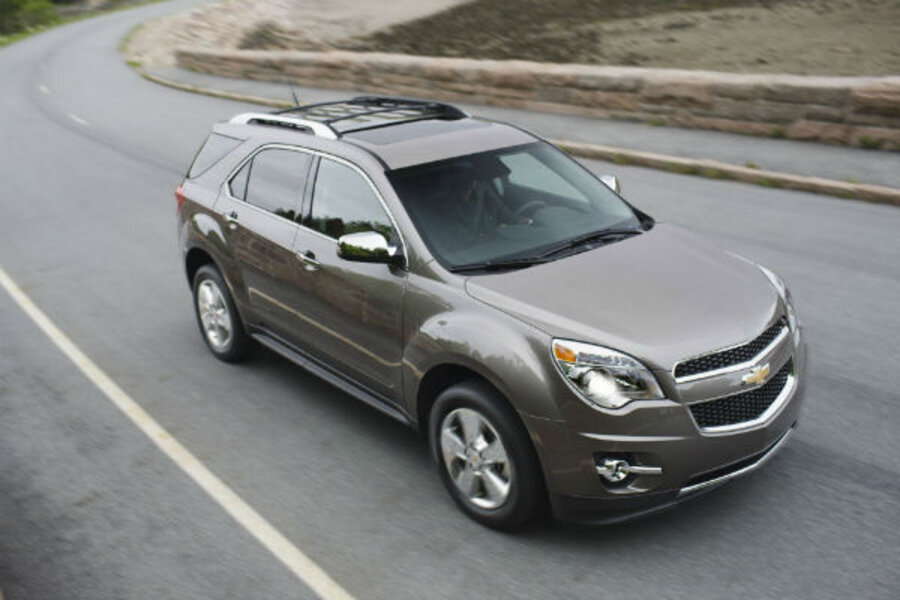Sticker price confusion: Why do GMC trucks cost more than Chevy?
Loading...
If you're out cross-shopping full-size SUVs or pickups—or if you've done so in recent years—you might be familiar with an interesting showroom discrepancy: You can go to a Chevrolet dealership, then into a GMC dealership, and see two virtually identical trucks—same engine, same equipment, even same sheetmetal—only the one at the GMC dealership has a sticker price that's up to several thousand dollars more than that of the Chevy.
For instance, a 2012 Chevrolet Tahoe 4WD 1500 LS comes with a bottom-line sticker price of $43,010, while a 2012 GMC Yukon 4WD 1500 SLE—virtually identical in equipment and features—bottom-lines at $45,090.
To those who aren't all that familiar with SUV or pickup shopping, it can be a strange market situation. General Motors [NYSE: GM] supports both truck brands, and both separate dealership networks, that essentially sell differently badged versions of the same vehicle.
US Chevrolet dealerships outnumber GMC dealerships by nearly two to one (3,079 vs 1,590), according to Automotive News, as of January 1, 2012.
You'll surely see far more Chevy trucks out on the streets and highways than GMC models, too. GM sells between two and three times as many Chevrolet-badged trucks each year than it does GMC vehicles. In calendar-year 2011, Chevy sold 852,889 trucks, according to Automotive News, while GMC sold 333,204 vehicles.
So what's the difference?
“GMC traditionally has been targeted to professionals while Chevy goes for the mass market,” said Jesse Toprak, vice president of market intelligence for the car-pricing site TrueCar. Beyond that, Toprak says that there's a clear overlap in the marketing message between the two. The only other difference, perhaps, is that GMC is aimed at “not being one of the herd,” and “more exclusive” than Chevrolet.
Is the difference in image worth the additional money GM is charging? There are some indications the market doesn't think so. For instance, that Tahoe 4WD 1500 LS has a national-average transaction price of $41,176, according to TrueCar's vast pricing database, while the 2012 GMC Yukon 4WD 1500 SLE sells for $42,721 on average. So from those figures, which are fairly representative, the Chevrolet typically sells for 4.3 percent below sticker, while the discount for the GMC is 5.3 percent.
In other words, GM attempts to charge more for GMC, but the market in part evens out the difference.
One place where that difference might pay back for GMC ownership is when you return to trade in. In a quick check of used Chevrolet versus GMC models on Kelley Blue Book, we saw that GMC models do tend to sell for significantly more than Chevy models—perhaps due to their relative rarity.
For some of those who do pay more for new GMC vehicles, a big portion are repeat buyers, who for some reason or another (different trim or styling cues, their dealership, or the allure of the badge) prefer the brand. Despite that, they're generally assembled at the same place and have the same underlying structure and core components—so no, we can't say they're better.
There isn't a big difference in household income between Chevy trucks and GMC, across brands. But there are some differences between Chevrolet truck and GMC buyers demographically. Based on TrueCar data—using Chevrolet Tahoe and GMC Yukon owners as a comparison—we can say that GMC owners are more likely to be married, and significantly less likely to be single and with kids; more likely to be 'post-family' empty-nesters; more likely in families with two-wage earners; more likely to be managers, skilled tradesman; more likely to be women; less likely to be teachers or executives; and less likely to have a college degree. Tahoes (Chevy) are also more likely to be bought by those who identify as Black or Hispanic.
So why, at the time when GM was cutting brands like Saturn, did it decide to keep GMC around? Wouldn't most shoppers have just gone to Chevrolet? For Toprak, that's a puzzle. “I think GM would be much better off having one truck line that focuses on one brand,” he said. “I don't really see the case in keeping two brands that essentially sell the same vehicle.
Denali, Denali, Denali
There's one good reason why General Motors might be keeping GMC around, Toprak says, and that revolves around the brand's top-of-the-line Denali trim—which GMC has essentially been equipping and pricing as Cadillac models, with a more rugged appeal.
“One strategy that would work long-term is that GMC becomes the luxury truck brand for GM.”
For instance, the 2013 GMC Terrain Denali was priced at $35,350—allowing less than a thousand-dollar difference from the base Cadillac SRX.
Under such a plan, the Denali name itself might hint either at the future of GMC—as a sort of luxury truck-and-utility counter to Cadillac cars, and perhaps even one that might only use the Denali name. GMC trucks would have things that Chevrolet trucks don't—and GMC's relative exclusivity on American roads, as it is, would already be set up to play to that.
In the meantime, what's our advice? Shop Chevy; shop GMC; and go with the best price.







